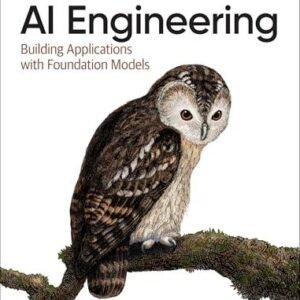In today’s rapidly evolving educational landscape, the integration of artificial intelligence (AI) has emerged as a game-changer, particularly in the realm of assessment and grading. With the increasing demand for personalized learning and efficient evaluation methods, educators are exploring innovative ways to harness AI to enhance the assessment process. From streamlining grading workflows to providing real-time feedback, AI technologies are transforming traditional methodologies, ultimately fostering a more effective and equitable learning environment. In this article, we will delve into how leveraging AI in assessments can not only reduce administrative burdens for educators but also improve the learning experiences for students, paving the way for a more data-driven and insightful approach to education. Join us as we explore the myriad benefits of AI-driven assessment solutions and their potential to revolutionize grading in classrooms around the world.
Table of Contents
- Understanding the Role of AI in Streamlining Assessment Processes
- Enhancing Grading Accuracy through Intelligent Algorithms
- Personalizing Learning Outcomes with Data-Driven Insights
- Best Practices for Implementing AI Tools in Educational Settings
- The Way Forward
Understanding the Role of AI in Streamlining Assessment Processes
Artificial Intelligence is redefining the traditional assessment landscape, enabling educators to offer more personalized and efficient evaluation experiences. By automating repetitive tasks, AI minimizes manual workload, allowing teachers to focus on delivering impactful instruction. Here are a few ways in which AI enhances assessment processes:
- Automated Grading: AI systems can quickly assess student responses, providing immediate feedback and freeing up valuable time for educators.
- Personalized Learning Paths: By analyzing student performance data, AI can tailor assessments to meet individual learning needs, promoting student engagement and motivation.
- Error Detection: Advanced algorithms can identify common inaccuracies in student responses, allowing for targeted interventions.
Moreover, integrating AI into assessment systems also enables the collection and analysis of vast amounts of data. This capability leads to informed decision-making based on actionable insights rather than subjective opinions. Here’s a brief overview of the benefits associated with AI-driven assessment approaches:
| Benefit | Description |
|---|---|
| Efficiency | Reduces the time spent on grading and administrative tasks. |
| Consistency | Ensures uniformity in grading criteria, reducing bias. |
| Engagement | Fosters a more interactive learning environment through adaptive assessments. |
Enhancing Grading Accuracy through Intelligent Algorithms
In the realm of education, fostering a more equitable grading system has become a pressing need. Intelligent algorithms harnessing AI can significantly refine the grading process by ensuring consistency and fairness across diverse submissions. By analyzing writing patterns, evaluating content depth, and providing constructive feedback, these algorithms can produce grades that reflect the true quality of student work. Here are some key benefits of utilizing these technologies:
- Reduction of Bias: AI algorithms eliminate human biases that can inadvertently affect grading.
- Time Efficiency: Automating assessments allows educators to focus on engagement rather than administrative tasks.
- Personalized Feedback: Algorithms can provide tailored feedback to help students improve their skills.
Moreover, the integration of AI in assessment practices can be substantially beneficial not only for educators but also for students. By providing a systematic approach to grading, intelligent algorithms can help identify learning gaps and suggest resources to bridge them. Consider the following comparison of traditional grading vs. AI-driven grading:
| Aspect | Traditional Grading | AI-Driven Grading |
|---|---|---|
| Speed | Time-intensive | Rapid |
| Consistency | Variable | High |
| Scalability | Limited | High |
Personalizing Learning Outcomes with Data-Driven Insights
In an era where education is increasingly data-driven, leveraging artificial intelligence (AI) can significantly enhance the personalization of learning outcomes. By analyzing extensive datasets, AI can identify individual student strengths, weaknesses, preferences, and learning styles. This intelligence allows educators to tailor assessments that not only gauge mastery of content but also align with each learner’s unique journey. Some key benefits include:
- Real-time Feedback: AI systems can provide instantaneous feedback on student performance, facilitating timely interventions and support.
- Customized Learning Paths: With insights from data analysis, educators can create personalized learning trajectories that cater to each student’s needs.
- Increased Engagement: Tailored assessments resonate more with students, helping to foster a greater interest in learning.
To further illustrate the impact of data-driven insights in personalizing educational outcomes, consider the following comparison of traditional and AI-enhanced assessment methods:
| Traditional Assessment | AI-Enhanced Assessment |
|---|---|
| Standardized tests for all students | Dynamic assessments based on each student’s performance |
| Delayed feedback | Immediate, actionable feedback |
| Uniform grading criteria | Differentiated grading based on individual progress |
As educational environments continue to evolve, the integration of AI into assessment practices not only transforms the grading process but also individuals’ learning experiences. By harnessing the power of data, educators can shift from a one-size-fits-all approach to a more nuanced strategy that emphasizes growth and personal achievement, ensuring that each student has the opportunities they need to thrive.
Best Practices for Implementing AI Tools in Educational Settings
Incorporating AI tools into educational systems requires a thoughtful approach to ensure effectiveness and alignment with pedagogical goals. Faculty training is paramount; educators must understand how to integrate AI into their assessment processes without undermining the personal touch that characterizes quality feedback. Providing workshops and continuous support can facilitate this transition. Moreover, educators should emphasize clear criteria and guidelines for using AI tools, enabling students to understand how AI influences their evaluations while fostering transparency and trust in the grading process.
Additionally, it’s essential to establish an iterative feedback loop when implementing AI in assessment. Collecting data on student performance can help refine AI algorithms and ensure their recommendations are relevant and beneficial. Institutions should consider forming task forces or committees that include educators, AI practitioners, and students to discuss the effectiveness of AI-driven assessments regularly. Below is a table outlining some recommended AI tools along with their primary features:
| AI Tool | Primary Feature | Best Use Case |
|---|---|---|
| Grading AI Pro | Automated essay scoring | Essay evaluations |
| QuizSmart | Adaptive quizzes | Personalized learning pathways |
| Feedback Genie | Instant feedback generation | Iterative assignments |
The Way Forward
As we navigate the evolving landscape of education, it is clear that the integration of artificial intelligence into assessment and grading practices holds immense potential. By leveraging AI tools, educators can not only enhance the accuracy of evaluations but also provide timely feedback tailored to individual learning needs. The benefits are multifaceted: from reducing administrative burdens for teachers to fostering a more engaging and responsive learning environment for students.
As we’ve explored, the effective implementation of AI in assessments can lead to more personalized educational experiences and a deeper understanding of student progress. However, to truly reap these benefits, it’s crucial for educators, administrators, and policymakers to embrace ongoing training, ethical considerations, and collaborative approaches. In doing so, we can ensure that the integration of AI enhances our educational practices, rather than simply acting as an automated solution.
The future of assessment and grading looks promising, and by embracing the innovations that AI brings, we can cultivate a more efficient, equitable, and insightful educational landscape. As we move forward, let’s continue to advocate for thoughtful, informed uses of technology, ensuring that every student’s voice is heard and every learning journey is valued. Together, we can harness the power of AI to create not just better assessments, but a better future for education.





